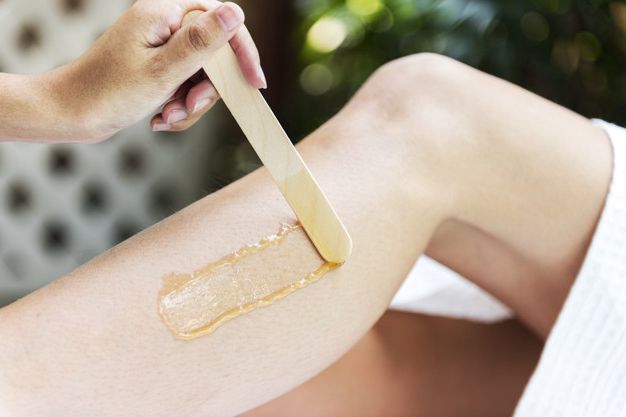Depilacja brazylijska - kompleksowe omówienie metody, historii i skutków zdrowotnych
Depilacja brazylijska – ile się utrzymuje?
Metoda usuwania włosków woskiem lub pastą cukrową daje efekt gładkiej skóry przez 2-5 tygodni.
Na laser decydują się przede wszystkim te osoby, które chcą pozbyć się włosków z okolic intymnych na zawsze. Laserowa depilacji bikini głębokiego może dać naprawdę długotrwały efekt, jednak – nie jest tak łatwo go osiągnąć. Dlaczego?
- Najlepsze rezultaty można uzyskać w przypadku włosków ciemnych – wiązka światła emitowana przez laser pochłania melaninę, czyli barwnik włosa. Jasne włoski mogą zostać pominięte.
- Depilacja laserowa przeprowadzona jest w kilku etapach, zwykle od 6 do 8. Zabiegi powtarzane są co kilka tygodni. Chociaż jedno spotkanie trwa jedynie około 30 minut, całość bywa rozciągnięta w czasie na parę miesięcy.
- Ile kosztuje depilacja brazylijska? Cena jednego zabiegu to około 250-300 zł. Laserowe usunięcie włosków nie należy więc do najtańszych.
Depilacja brazylijska przeprowadzana laserem ma jednak swoje zalety – chodzi nie tylko o trwałość efektu, ale i możliwość ograniczenia bólu. Nowoczesne sposoby depilacji laserowej pozwalają uniknąć poczucia dyskomfortu – to z pewnością dobra metoda dla osób wrażliwych na ból.
In zoology [ edit ]
In varying degrees most mammals have some skin areas without natural hair. On the human body, glabrous skin is found on the ventral portion of the fingers, palms, soles of feet and lips, which are all parts of the body most closely associated with interacting with the world around us, [3] as are the labia minora and glans penis. [4] There are four main types of mechanoreceptors in the glabrous skin of humans: Pacinian corpuscles, Meissner's corpuscles, Merkel's discs, and Ruffini corpuscles.
The Naked mole-rat (Heterocephalus glaber) has evolved skin lacking in general, pelagic hair covering, yet has retained long, very sparsely scattered tactile hairs over its body. [3] Glabrousness is a trait that may be associated with neoteny. [ citation needed ]
Within entomology, the term glabrous is used to refer to those parts of an insect's body with are lacking in setae (bristles) or scales. [5]
Depilacja brazylijska w domu – jaką metodę wybrać?
Ze względu na komfort, ale i na niższe koszty depilacji brazylijskiej, niektórzy decydują się wykonać ją w domu. Chociaż najtańszą i zarazem najpowszechniejszą metodą jest usunięcie włosków się za pomocą maszynki do golenia, nie polecamy tego rozwiązania – łatwo o podrażnienia i skaleczenia.
Depilacja brazylijska – jak zrobić? Metody
- Wosk. Koszt wosku i pasków fizelinowych, które spokojnie wystarczą na kilka zabiegów, nie powinien przekroczyć 30-40 złotych. Depilacja części intymnych może jednak nie należeć do najprostszych. Jeśli nie masz wprawy, okaże się także bolesna.
- Pasta cukrowa. Jest znacznie mniej bolesna, za to łatwiejsza do wykonania. Gotowa pasta cukrowa kosztuje około 20-30 złotych, chociaż możesz spróbować zrobić ją samodzielnie.
- Depilator laserowy. W domowych warunkach możesz również zdecydować się na przenośny laser. Ceny profesjonalnych urządzeń rozpoczynają się od około tysiąca złotych.
Glabrousness
Glabrousness (from the Latin glaber meaning "bald", "hairless", "shaved", "smooth") is the technical term for a lack of hair, down, setae, trichomes or other such covering. A glabrous surface may be a natural characteristic of all or part of a plant or animal, or be due to loss because of a physical condition, such as alopecia universalis in humans, which causes hair to fall out or not regrow.
Glabrousness or otherwise, of leaves, stems, and fruit is a feature commonly mentioned in plant keys, in botany and mycology, a glabrous morphological feature is one that is smooth and may be glossy. It has no bristles or hair-like structures such as trichomes. In anything like the zoological sense, no plants or fungi have hair or wool, although some structures may resemble such materials.
The term "glabrous" strictly applies only to features that lack trichomes at all times. When an organ bears trichomes at first, but loses them with age, the term used is glabrescent.
In the model plant Arabidopsis thaliana, trichome formation is initiated by the GLABROUS1 protein. Knockouts of the corresponding gene lead to glabrous plants. This phenotype has already been used in gene editing experiments and might be of interest as a visual marker for plant research to improve gene editing methods such as CRISPR/Cas9. [1] [2]

Depilacja brazylijska – jak się przygotować?
Jak pozbyć się włosków z okolic intymnych? Depilacja brazylijska często przeprowadzana jest za pomocą lasera lub wosku. W obu wypadkach, aby efekt był satysfakcjonujący, należy się odpowiednio przygotować.
- Zapoznaj się z instrukcjami i wytycznymi, które otrzymasz od wybranego salonu kosmetycznego.
- Jeśli chodzi o usuwanie owłosienia woskiem, musisz zadbać o to, aby twoje włoski miały mniej więcejdługość pół centymetra. Jeśli będą zbyt długie, narazisz się na niepotrzebny ból. Za krótkie mogą okazać się niemożliwe do usunięcia.
- Poleca się, aby depilację brazylijską wykonywać w połowie cyklu menstruacyjnego – tuż przed lub po miesiączce możesz być bardzo wrażliwa na ból. Niektóre salony przestrzegają, aby nie wybierać się na zabieg w czasie krwawienia, nawet jeśli używasz tamponów lub kubeczków menstruacyjnych. Skóra w czasie miesiączki jest bardzo wrażliwa.
- Zadbaj o higienę.
- Unikaj używania kremów, balsamów czy oliwek.
- Po zabiegu (chociaż przez tydzień) zrezygnuj z opalania, solarium, kąpieli w basenie.

 U nas zapłacisz kartą
U nas zapłacisz kartą
